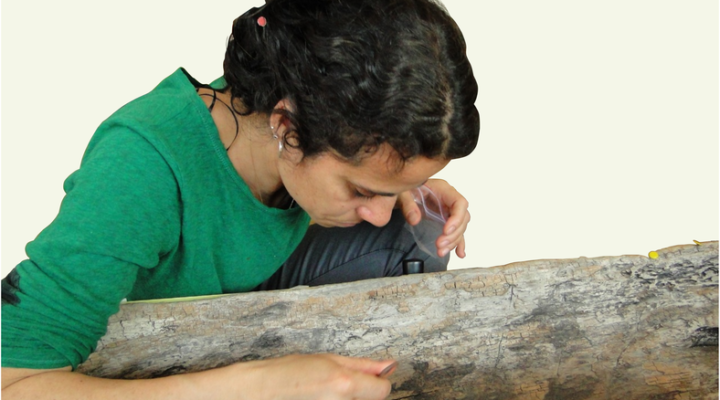SOCIAL SCIENCES AND HUMANITIES
CONICET researcher participates in the study of a 5,000-year-old underwater discovery found in Italy
The archeological site belongs to the Neolithic period and was preserved under the water in the lake Bracciano in Rome.
Laura Caruso Fermé is an associate researcher of the ‘Patagonian Institute of Social and Human Sciences’ (IPCSH-CONICET) and the archeologist in charge of the study of all the artefacts and wood remains of the underwater site “La Marmotta,” which is located in the Museo Delle Civiltà in Rome. The scientist is an expert in archaeobotany, the discipline that analyses the relationship and the interaction of past societies with the natural environment from vegetable remains. “The study of wood artefacts is another possibility of learning about the knowledge on natural environment of the inhabitants who lived there. The methodology of wood acquisition and uses can reflect a group’s social organization, ways of living and cultural elections,” she affirms.
The archeologist organizes and plans the different types of analyses that are going to be done to the remains and the wood artefacts in the museum of Rome. “It was extraordinary to obtain the diversity, the amount and the state of conservation of the materials of “La Marmotta.” We have excavated only 25 per cent of it and we’ve found five canoes, sickles, leftover fabric, food scraps and a several types of wood artefacts to be enumerated.”
The first time they went to excavate, they focused on the wood artefacts linked to sailing and agricultural activities. We managed to obtain five perfectly preserved canoes. “The analyses showed that the canoes were ten meters long and were carefully built. In their laterals, they have complex pieces of wood embedded, what reveals naval technology that was unknown for that time. Our studies allowed us to understand the type of wood they used and how they work it to obtain these pieces. For our second trip, we plan to conduct experimental work to understand the specific use of the wood artefacts linked to sailing.”
As regards the agricultural materials, the archeologist analyzed the wood used as raw material and the building technique of the shovels to mix cereal and sickles. “From the analyses of the microanatomy of the wood we managed to identify the species that were used to make these elements. This helps us to understand, for instance, if there was some kind of selection in the wood used in the making of the different artefacts.”
In September, the scientist is going back to the Museo Delle Civiltà in Rome, after having analyzed several samples in the archeology laboratory of the IPCSH-CONICET, in Patagonia. In this second trip, she is going to continue studying a series of wood artefacts to obtain and provide new information on the society of the Neolithic. “The study of these objects helps us to better understand the life style of these societies, their relationship with the environment, and the knowledge they had on the resources, in this case, the natural ones,” the researcher concludes.
Laura Caruso Fermé was called to participate in the project Expansion and development of Neolithic at central Mediterranean: technology and food production in the lake settlement La Marmotta (Rome, Italy) led by Dr. Mario Mineo of Museo Delle Civiltà of Rome and Juan Gibaja of the Consejo Superior de Investigaciones Científicas (Barcelona), for her experience on the study of artefacts and wood remains recovered in archeological sites. Part of the results obtained are going to be presented by Dr. Caruso Fermé at the 7th International Anthracology Meeting: Charcoal Science in Archaeology and Palaeoecology (Liverpool) and in the 1st Conference on the Early Neolithic of Europe (Barcelona).
By Alejandro Cannizzaro
Translation: Cintia González
